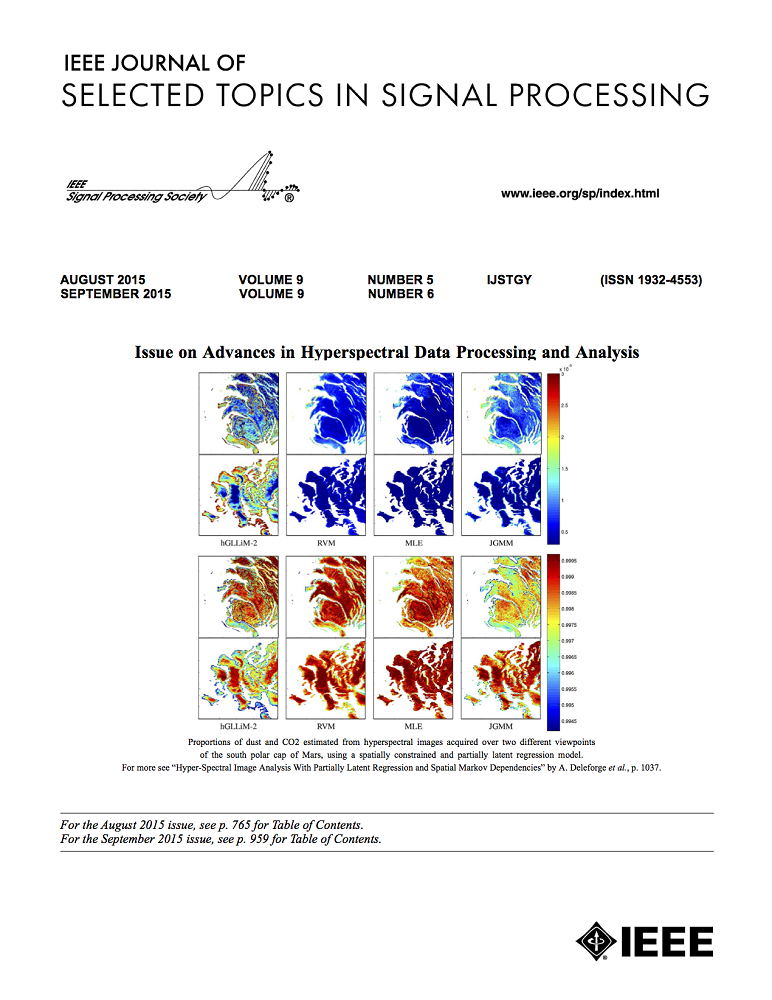意识到不协调性的跨模态注意力用于维度情感识别中的视听融合
IF 8.7
1区 工程技术
Q1 ENGINEERING, ELECTRICAL & ELECTRONIC
IEEE Journal of Selected Topics in Signal Processing
Pub Date : 2024-07-03
DOI:10.1109/JSTSP.2024.3422823
引用次数: 0
摘要
多模态情感识别在全面评估人类情感方面具有巨大潜力,它利用的多种模态往往表现出互补关系。在基于视频的情绪识别中,音频和视觉模式已成为突出的非接触渠道,在现有文献中得到了广泛探讨。当前的方法通常采用音频和视觉模式之间的跨模式注意机制,假设互补性处于恒定状态。然而,这一假设并不总是成立的,因为非互补关系也可能表现出来,从而削弱跨模态特征整合的效果,进而降低视听特征表征的质量。为了解决这个问题,我们引入了一种新颖的不协调感知交叉注意(IACA)模型,该模型能够利用稳健互补关系的优势,同时有效管理非互补情景。具体来说,我们的方法采用了两阶段门控机制,旨在自适应地选择语义特征,从而有效捕捉模式间关联。此外,所提出的模型还能减轻严重损坏或缺失模态的不利影响。我们在具有挑战性的 RECOLA 和 Aff-Wild2 数据集上进行了大量实验,严格评估了所提模型的性能。实验结果表明,我们的方法能够巧妙地捕捉模态间的关系,并最大限度地减少缺失或严重损坏模态的影响,因此其性能优于最先进的方法。此外,我们还证明了所提出的模型与各种跨模态注意力变体兼容,在两个数据集上的性能都得到了持续改善。本文章由计算机程序翻译,如有差异,请以英文原文为准。
Incongruity-Aware Cross-Modal Attention for Audio-Visual Fusion in Dimensional Emotion Recognition
Multimodal emotion recognition has immense potential for the comprehensive assessment of human emotions, utilizing multiple modalities that often exhibit complementary relationships. In video-based emotion recognition, audio and visual modalities have emerged as prominent contact-free channels, widely explored in existing literature. Current approaches typically employ cross-modal attention mechanisms between audio and visual modalities, assuming a constant state of complementarity. However, this assumption may not always hold true, as non-complementary relationships can also manifest, undermining the efficacy of cross-modal feature integration and thereby diminishing the quality of audio-visual feature representations. To tackle this problem, we introduce a novel Incongruity-Aware Cross-Attention (IACA) model, capable of harnessing the benefits of robust complementary relationships while efficiently managing non-complementary scenarios. Specifically, our approach incorporates a two-stage gating mechanism designed to adaptively select semantic features, thereby effectively capturing the inter-modal associations. Additionally, the proposed model demonstrates an ability to mitigate the adverse effects of severely corrupted or missing modalities. We rigorously evaluate the performance of the proposed model through extensive experiments conducted on the challenging RECOLA and Aff-Wild2 datasets. The results underscore the efficacy of our approach, as it outperforms state-of-the-art methods by adeptly capturing inter-modal relationships and minimizing the influence of missing or heavily corrupted modalities. Furthermore, we show that the proposed model is compatible with various cross-modal attention variants, consistently improving performance on both datasets.
求助全文
通过发布文献求助,成功后即可免费获取论文全文。
去求助
来源期刊

IEEE Journal of Selected Topics in Signal Processing
工程技术-工程:电子与电气
CiteScore
19.00
自引率
1.30%
发文量
135
审稿时长
3 months
期刊介绍:
The IEEE Journal of Selected Topics in Signal Processing (JSTSP) focuses on the Field of Interest of the IEEE Signal Processing Society, which encompasses the theory and application of various signal processing techniques. These techniques include filtering, coding, transmitting, estimating, detecting, analyzing, recognizing, synthesizing, recording, and reproducing signals using digital or analog devices. The term "signal" covers a wide range of data types, including audio, video, speech, image, communication, geophysical, sonar, radar, medical, musical, and others.
The journal format allows for in-depth exploration of signal processing topics, enabling the Society to cover both established and emerging areas. This includes interdisciplinary fields such as biomedical engineering and language processing, as well as areas not traditionally associated with engineering.
 求助内容:
求助内容: 应助结果提醒方式:
应助结果提醒方式:


